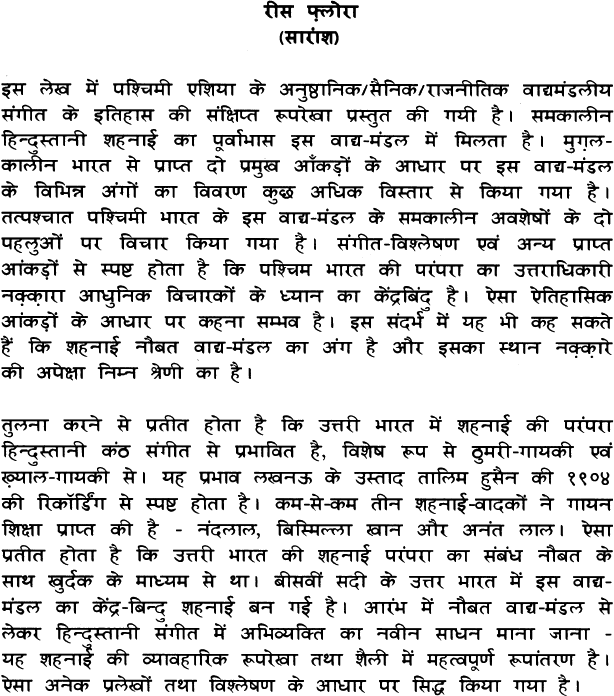No CrossRef data available.
Article contents
Styles of the Śahnāí in Recent Decades: From Naubat to Gā Yakī Ang
Published online by Cambridge University Press: 07 March 2019
Extract
The aim of this paper is to establish a frame of reference for a comprehensive study of the Hindustāni śahnāī during the twentieth century. The Hindustāni śahnāī, a type of double-reed aerophone, consists of a relatively small double reed of cane, as distinct from other double reeds in India made from palm leaf (Flora 1986), attached by a small conical metal tube to a wooden pipe of conical bore with seven fingerholes, no thumbhole, and an attached metal bell (Flora 1992). The author's instrument, from the tip of the reed to the end of the metal bell, varies from approximately 50 cm to 51 cm, depending on the particular reed and metal tube used. Playing in tune with a good reed is more important than maintaining a consistent length for the instrument.

- Type
- Articles
- Information
- Copyright
- Copyright © 1995 by the International Council for Traditional Music
Footnotes
For valuable sources on this issue, see Faruqi 1981:234–35 (nawbah), King 1984, King and Gourlay 1984, Tingey 1994: 19-23, and Trewin 1995. I am grateful to Mr. Peter Micic for calling my attention to the recently published article by Trewin.


